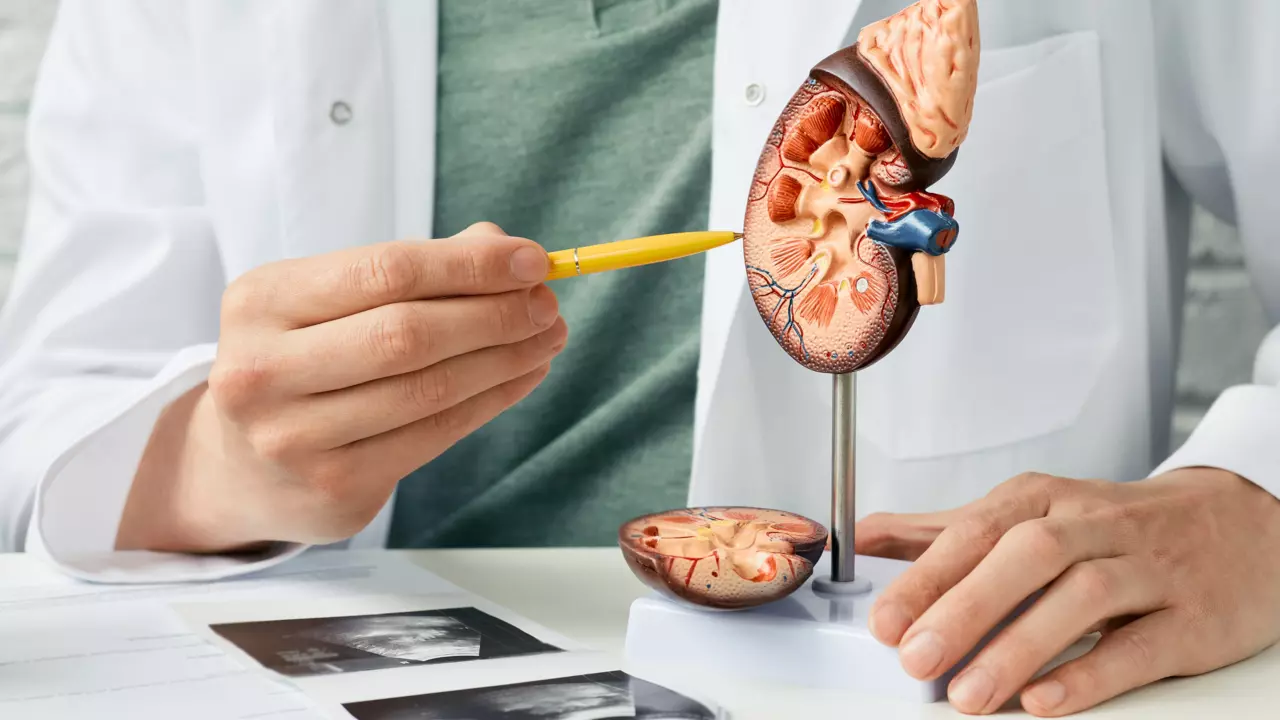BHD Case Reports: Summer Round-Up
8 Sep 2023
Every few months we like to highlight some of the recent case reports of Birt-Hogg-Dubé syndrome (BHD). A case report is a detailed account of (normally) a single person's diagnosis and treatment journey. In this blog, we present 3 cases of BHD and cancer.
A case of two types of kidney cancer
In this case report, a 36-year-old woman underwent an MRI scan which showed she had two tumours in her left kidney. She had surgery to remove the tumours. Samples were taken from the tumours to confirm what kind of cancer she had. One of the tumours was confirmed to be clear cell kidney cancer and the other was chromophobe kidney cancer. Genetic testing showed a mutation in the gene folliculin (FLCN), the gene associated with BHD. It turned out that the patient also had a history of collapsed lungs but did not have any skin bumps. Multiple members of her family also had lung cysts, but they did not consent to genetic testing.
This case is interesting due to the tumours being different types of kidney cancer. It highlights the complex nature of BHD and the need for a better understanding of the different types of kidney cancer linked with BHD as well as how BHD causes kidney cancer.
A case of BHD with only kidney symptoms
In this report*, a 51-year-old woman with breast cancer had a CT scan of her chest and stomach to help stage her breast cancer. She was found to have several tumours in both her kidneys. They took a sample of the tumour to confirm they were not caused by her breast cancer spreading. At the time, BHD was not suspected due to the lack of skin symptoms and no family history of any BHD symptoms. The patient received treatment for her breast cancer and soon after had surgery to remove her kidney tumours. In total, 12 tumours were removed, and they were all confirmed to be hybrid oncocytic/chromophobe tumours. Although much of the kidney was preserved, this did slightly reduce her kidney function. This diagnosis prompted further investigation for BHD. Genetic testing showed a mutation in FLCN, c.602A>C, that has not previously been reported (see our guide on understanding genetic sequencing results for more information). The same mutation was also found in the patient’s mother who did not have any symptoms of BHD. The patient also had no other symptoms of BHD.
This report highlights one of the few instances of BHD with only kidney symptoms. Currently, it is unclear if only kidney symptoms can be linked to particular FLCN mutations.
BHD and testicular cancer
In this case report* a 34-year-old male presented to the clinic with a history of skin bumps on the face, neck and chest. The patient had also had 2 collapsed lungs which required a pleurodesis. A review of his family history showed that multiple members had similar skin symptoms. There was also a family history of skin cancer (melanoma). Genetic testing confirmed a mutation in FLCN confirming the diagnosis of BHD. Of interest, the patient also had a left-sided testicular seminoma (a type of cancer) at the age of 29. Then at the age of 34, he was found to have a right-sided testicular seminoma. Both were treated by surgery.
Testicular cancer has only been reported in BHD once before, however that individual also had neurofibromatosis type 1 (NF1). The authors of the previous report could not conclude if this was linked to BHD, NF1 or was just a coincidental finding as testicular cancer is a common cancer among men aged 15-34 years. However, this type of cancer has been previously linked to the same molecular pathway as FLCN. Due to this patient having cancer in both testicles at different times, the authors of this case report suggest that the association needs further investigation. Given that this is only the 2nd report of testicular cancer in BHD, if there is any association it appears to be extremely rare.
Summary
These three case reports highlight the need for a better understanding of BHD. Although case reports are useful for revealing possible conditions associated with BHD, a larger sample of people is needed to confirm whether they are linked. This is one of the reasons why we launched the BHD Syndrome International Registry earlier this year. We need a centralised database to collect this information on a global scale to drive forward research and find new treatments or even a cure for BHD.
*Please note these papers are unfortunately not freely available.
